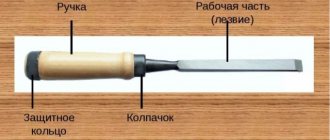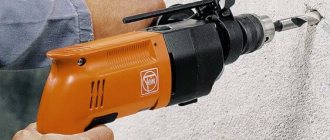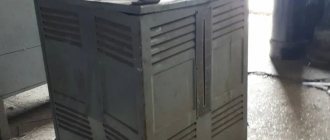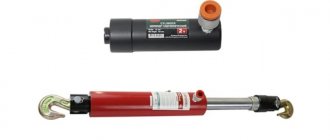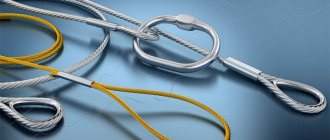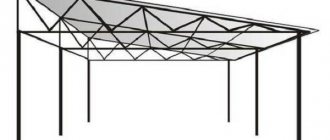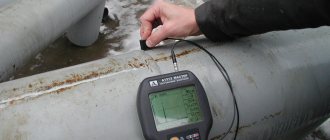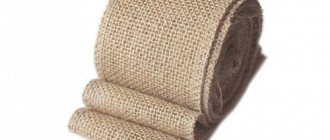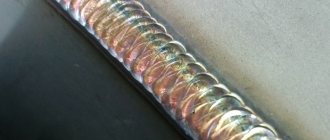In the operation of a hammer drill, the main role is played by the impact, and not the rotation of the drilling mechanism. If the impact force weakens or disappears altogether, it becomes impossible to drill surfaces with such a tool. The reasons why the hammer drill stopped chiselling relate to both the mechanics and the electrical part. The article talks about problems and how to fix them.
Disassembly and assembly procedure
Having cleared and freed a place in the workshop for repair work on electrical equipment, and prepared the necessary set of tools, the hammer drill begins to be sequentially disassembled to determine the malfunction, carefully inspecting each component and part. The tool is disassembled according to the following scheme.
How to disassemble an electric motor
To inspect the moving part, the first thing the master does is separate it from the impact mechanism and gearbox. To do this, unscrew the holding bolts (there are four of them), then:
- The rotor (or rotor armature) is removed from the gear drive sleeve.
- The separated motor is removed from the housing.
- The rotor and stator windings are diagnosed separately.
- The rotor armature is checked for the integrity of the windings and the absence of bridging and twisting turns. The technician will also pay attention to the bearings - if their integrity is compromised, they are removed and replaced.
- Having unscrewed the holding screws, the technician removes the stator by slightly shaking or tapping it.
- The rotor and stator windings are examined with a multimeter, measuring the resistance on the lamellas.
Important. If the stator winding is broken, the technician can twist it in a workshop, but if the fault is in the rotor armature, it will most likely have to be replaced.
The brushes sparkle
When the brushes sparkle, the first thing it is recommended to do is clean the tool from dust. If the effect of sparks does not stop, the device is disassembled and the integrity of the brushes themselves is checked. If necessary, one or both brushes are replaced to avoid shorting.
Disassembly algorithm
Do not forget that repair of a rotary hammer is only possible in de-energized mode! Due to the similarity in the internal composition of the main part of the hammer drills, the tool disassembly scheme is approximately the same. If no external faults are observed, you should start disassembling the device from the cartridge.
Next, the following parts are removed sequentially:
- rubber boot;
- retaining ring (using a screwdriver);
- plastic boot;
- washer;
- plate;
- spring;
- small metal ball.
When the last four parts wear out, the barrel cannot stay in the cartridge and begins to fall out. To fix this, you need to replace the broken part, and clean and lubricate the remaining parts.
The next part in the parsing algorithm is the body . The first thing to do is remove the switch. To do this, it must be transferred to the “Strike” state, indicated by a drawn hammer. Then, hold the button on this mechanism and turn it until it clicks.
To complete removal, take a screwdriver and use it to pry up the switch and remove it. In order to get to the electrical fault, it is worth removing the plastic housing.
This is not difficult; it is usually held on with screws around the perimeter. If there is a problem in the gearbox, it must be dismantled and damaged bearings replaced.
Read also: CNC turret lathe 1v340f30
Replacement of main components
If during diagnostics the technician determines that one of the main components has become unusable, he will replace it to avoid damage to other parts of the device.
How to remove the mode switch
To diagnose internal components, it is necessary to remove the hammer housing and clean the surface of the components from dust. The analysis begins with the compartment of the operating mode regulator.
It is moved all the way - as a rule, this is the extreme right position (below the rebound mode icon), after which, using a flat screwdriver, the regulator is removed from its socket.
Mechanical failures
If you hear the sound of the engine rotating, but the device does not perform functions, this means that problems are observed in the operation of the mechanical “stuffing” of the instrument:
- the impact does not transfer to the cartridge or the nozzle, i.e. stopped hitting and the blow disappeared;
- the rotation of the axis is stopped;
- hammers, but does not twist;
- works only in one position;
- the nozzle slips in the chuck clamps or, conversely, gets jammed after use.
Lost impact on the hammer drill?
Reference. The listed mechanical problems indicate malfunctions in the chuck mechanism. If grinding and extraneous sounds come from inside the case, in order to identify and eliminate the malfunction, you will have to disassemble the entire instrument and inspect the transmission units.
Daily care and storage
In order for the tool to serve the master properly for many years, during operation it is recommended:
- run the device “idle” before starting work. If the hammer drill shows signs of breakdown, work is stopped and diagnostics begin.
- After completing the work, take care of the cleanliness of the rotary hammer - it is important to remember that electrical appliances “do not like” water; cleaning is carried out with a vacuum cleaner and rags.
- If the hammer drill is working in the cold or has been moved indoors from outside, do not start it right away. Allow the components to “warm up” and the lubricant to thaw.
- Carry the hammer drill in a special box or suitcase (usually included) to avoid dust and construction debris.
Thus, if you follow objective precautions and operating rules for the hammer drill, it will last a long time and without breakdowns. If trouble does happen, the suggested advice from the experts will help determine the essence of the problem and fix the breakdown in a timely manner.
Everything a home mechanic needs to know about rotary hammer repair
A universal chipping tool with a rotary impact mechanism, also known as a hammer drill, is used by construction crews, electricians and repairmen. They also use it in the home workshop.
Like other electrical appliances, a rotary hammer sometimes breaks down. Take it to a service center and leave a certain amount there, or take advice and repair the instrument yourself - everyone decides for themselves. If the decision to repair a rotary hammer at home has been made, you should first study the features of its design and the advice of experts on diagnostics and repair.
- The structure of the tool and its mechanism
- Troubleshooting
- Mechanical failures
- Electrical faults
- Disassembly and assembly procedure
- Removing the cartridge
- How to remove the mode switch
- How to check the start button and brushes
- How to disassemble an electric motor
- How to disassemble and check other elements
- Possible faults
- Doesn't hit - reasons
- Doesn't spin or drill
- The drill does not stay in the chuck and flies out
- The brushes sparkle
- The tool gets very hot
- Doesn't hold a cartridge
- Replacement of main components
- Bearings
- Start button
- Brushes
- Cartridge
- How to repair a barrel tool?
- Daily care and storage
How to fix a rotary hammer with your own hands
The repair procedure at home is the optimal solution and will cost less than the services of service centers. Instrument repair is expensive and it is not a fact that you will find a conscientious repairman. Before you think about how to make a hammer drill, you should acquire the necessary tools and stock up on theoretical knowledge on how to disassemble and assemble a hammer drill. After completing the repair, run it in gentle mode.
READ How Drill Works Video
Barrel hammer drill repair
This procedure is no different from repairing a conventional hammer drill. Honor states that the engine and shaft are located vertically.
Oil is leaking from the drill
Leakage is a direct indicator of wear and tear on certain parts inside the mechanism. Spin the model and make diagnostics, change the lubricant if necessary.
Additional accessories
When purchasing a Hitachi hammer drill, the user receives the tool itself with all the assembled components and a case for storing and carrying it. Before purchasing, it is recommended to consult with the store’s specialists about what other additional devices may be needed for its further operation. As a rule, the assortment always includes a variety of attachments, add-ons, and consumables. The following types of nozzles exist:
- construction drill;
- drill bit;
- chisel;
- peak;
- spatula
Rotary hammer design, assembly diagram and spare parts list
The tool consists of a single-phase motor and rotor. A gear located on the armature shaft is responsible for rotational movements. Between them there are bearings, one of which is “drunk”, it is this that transmits movement to the working parts.
The hammer drill does not rotate under load
Most likely, the load does not correspond to the permitted norm, resulting in this defect.
Why does the hammer drill heat up?
Most often, the reason for this is the length of operating time and heavy loads on the tool. The engine interacts with working units, which may result in overheating. When it appears, turn off the tool, give it time to cool - at least half an hour.
If the rotary hammer hammers but does not drill
- The conical spring holds the clutch, if it becomes loose, a problem may arise;
- The locking roller no longer locks the large shaft gear;
- stops working .
In this case, it is enough to replace or tighten up the problematic parts and start in a gentle mode.
Replacing the button and brushes
A noticeable burning smell emanating from the hammer drill indicates that the brushes are faulty and need to be replaced. When used for a long time, brushes wear out, spark, and may even start to burn. In this case, they should be replaced.
The brushes are located in the electrical part , so after removing the plastic case and disassembling the brush assembly, you need to remove the old brushes from under the lock and replace them with new ones. Now some manufacturers immediately include spare brushes in the kit, which simplifies the task for the average user.
Changing the switch button is much easier, but it is not included in the additional kit. In a disassembled case, it is enough to disconnect the damaged button and put a new one in its place.
Sometimes the problem with the switch is not that serious, and some technicians advise simply turning the button 180 degrees and continuing to use. But this life hack only helps if the problems are minor.
How to repair a hammer drill if it stops working. We find out the causes of tool failures
The construction industry is developing and adding new tools every day. For several years now, the hammer drill . Essentially, this is a regular drill that is equipped with an impact effect. Every second worker encounters malfunctions.
The splines of the clutch, pos. 67, mounted on the intermediate shaft, were cut off
The malfunction can be eliminated by repairing the clutch or completely replacing it. When making repairs, the worn teeth on the clutch are filed down. To correct this defect, a round needle file and a drill are used. The coupling is clamped in the hand, and the tooth profiles are straightened using a drill with an appropriate file. The splines on the intermediate shaft are modified in the same way.
Restoring the teeth of the intermediate shaft clutch
The rolling bearing race has fallen apart (drunk bearing)
If the drunk bearing pos. 830 is destroyed, the rotational movement of the intermediate shaft cannot be converted into the translational movement of the cylinder in the impact mechanism.
Eliminated by completely replacing the rolling bearing.
Friction bearing
Is it worth repairing the hammer drill yourself or is it better to send it to a service center?
Should I repair the device myself or contact a service center? This question interests many people. If you wish, you can easily deal with problems at home by replacing the necessary parts. Service specialists will not always correct the error quickly, but you will have to pay a lot.
In some cases, services only replace them with licensed parts, which also cost a lot, so you’ll have to “fork out for it.” It is best to initially check the device completely yourself, and only if it is impossible to do everything yourself, visit a service center.
The Makita rotary hammer is an excellent device for working at home. If necessary, you can independently cope with the problems that arise, disassemble it and replace the necessary parts.
The hammer drill does not rotate under load
If the hammer drill has stopped hammering , the feasibility of repairs should be assessed. There is no point in restoring imitations of popular brands, cheap modifications - they are not designed for a long service life, the cost of repair is approaching the purchase of a new power tool. Models of famous brands last longer; their replacement is often caused by the appearance of modifications with additional capabilities and obsolescence.
Lack of preventive maintenance after 100-80 hours of operation will inevitably lead to failure of the hammer drill.
Other mechanical breakdowns and their elimination
In addition to breakdowns associated with the impact mechanism, other mechanical breakdowns may also occur in the hammer drill.
Pistol type hammer drills
The design of the impact mechanism in a pistol-type unit is slightly different from the same-purpose mechanism installed in a barrel-type unit.
Its main difference is that the piston is driven not by a connecting rod, but by a swinging (“drunk”) bearing. Therefore, the most common breakdown of this unit is the wear of a “drunk” bearing that needs to be replaced.
The next photo shows a destroyed “drunk” bearing, which is the reason why the hammer drill stopped hammering .
The swing bearing is removed using a flat screwdriver, which you need to pick up the bracket and remove it. After this, the bearing is easily separated from the gearbox housing.
When replacing a collapsed bearing, you should thoroughly rinse the gearbox, since it is in its housing that fragments of the broken part may remain.
After cleaning and installing a new bearing, apply a thick layer of lubricant to this block.
Also, the reason that the device does not hit can be a broken firing pin. To get it out, you need to remove the retaining ring that is visible in the hole.
Take a small screwdriver, pick up the ring with it, and move it to the right (towards the gear).
Do the same steps on the other side of the part. Next, insert a screwdriver into the hole in the part and push through the removed internal parts of the mechanism.
After this action, you can easily get the locking ring and the housing in which the broken striker is located.
If you disassemble this case, you will see the “culprit” of the malfunction, due to which the hammer drill does not hammer.
When assembling the impact mechanism, be sure to generously apply lubricant to all parts.
Mechanical malfunctions of the Bosch rotary hammer
When mechanical malfunctions occur in the operation of the tool, an extraneous unpleasant sound appears, sparking intensifies in the collector area, a burning smell appears, the tool heats up excessively, its power drops depending on the duration of operation and the impact on the material.
We will look at all the faults in the diagram of the Bosch 2-26 rotary hammer. Other models, such as Bosch 2-20, 2-24, differ in the design of the intermediate shaft and the installation of various bearings.
Let's consider options in which the hammer drill does not hammer, but drills
Wear of rubber rings on the striker, striker, piston.
This reason appears gradually as the rubber rings wear out. At first the blow weakens, then disappears altogether.
The malfunction is eliminated by replacing the indicated rubber rings with new ones.
For any repair of rotary hammers or their components, all rubber products must be replaced.
Repair kit for rubber sealing rings for a Bosch 2-26 rotary hammer
The mechanism for fixing the tool in the drill barrel does not hold the drill
Bosch rotary hammers use two types of chucks: SDS-plus and SDS-max. The difference is in the design of the locking mechanism.
The reason is the wear of the antennae of the chuck raster bushing, which makes it impossible to transmit the shock pulse to the working tool of the hammer drill.
Tool shanks for hammer drill chucks Bosch 2-26
"Drunk" bearing
It is mounted on the shaft at an angle and drives the piston. If there is wear or damage, the bearing must be replaced.
Mode switch
Mechanism parts may come out of the guide grooves. This may be a consequence of deformation, wear, or frequent use of the tool with the mode not fully engaged. The malfunction is eliminated by installing the parts in their places or replacing them with new ones.
How to extend the life of a hammer drill?
The service life of this tool largely depends on the correctness and timeliness of its maintenance, proper preparation for work, as well as on compliance with all storage and operation rules.
Before turning on the hammer drill, you need to check the reliability of fastening of all housing elements, the insulation of the plug and the power cable.
When operating the equipment, you should pay attention to extraneous noise, burning smell and strong vibrations. If they appear, you should immediately carry out maintenance, identify and eliminate the malfunction.
Continuous operation of the hammer drill should not exceed 15 minutes, after which a break should be taken for at least 5 minutes. Before replacing the working element (drill, drill, chisel), be sure to lubricate the tail. It is allowed to change the operating modes of the hammer drill using the appropriate switch only after the electric motor has completely stopped.
Compliance with all recommendations for using a rotary hammer will protect it from failure, and you from headaches.
Hammer hammer impact mechanism
Most modern rotary hammers have an electro-pneumatic impact mechanism. “Electric” means that the mechanics are driven by an electric motor, and “pneumatic” means that the striker hitting the drill shank is driven by air.
- Engine rotation transmission gear
- "Drunk" bearing
- Piston
- Drummer (“flying piston”)
- Trunk
- Striker
- SDS cartridge
When you press the button, the engine transmits rotation to a shaft with a “drunk” bearing, which in turn drives the piston inside the barrel. As the piston moves forward, air pressure increases between it and the striker. The striker moves towards the striker and hits it. The striker transfers the impact energy to the drill. Then the piston moves in the opposite direction, creating a vacuum area in the barrel. Due to this, the striker returns to its original position, after which the entire cycle is repeated.
Most rotary hammers have two or three operating modes:
- combined mode: impact and rotation of the drill;
- Rotation lock mode: only the impact mechanism works;
- impact blocking mode: the hammer drill can be used as a drill or a mixer for preparing building mixtures.
The structure of the tool and its mechanism
Device
The functional purpose of a hammer drill is determined by its internal structure.
The reinforced shock-rotational mechanism of the tool is the so-called “oscillating bearing” or “crank rod”, which, rotating from the engine, transmits vibrations to the pneumatic pistons (or piston), after which the air pumped into the pistons pushes the striker with a blow.
An impact force of 17-20 kilojoules and parallel rotation of the displacer due to the transmission gear ensures that the chisel or drill enters high-density material. It is necessary for punching through holes or drilling holes for electrical wiring or plumbing pipes.
Video about the construction of a hammer drill and impact mechanism:
Malfunction of the drilling mode in the hammer drill
The list of the most common malfunctions of power tools invariably mentions the situation when a BlackDecker, Bosch, DeWALT or any other brand hammer drill does not work in drilling mode, but is actively chiseling the material being processed.
READ Trimmer Doesn't Work Without Choke
Effective impact is an important advantage of a hammer drill, but without rotation of the drill it will be almost completely neutralized. In this case, the functionality of the tool will be limited to short-term operations with a chisel, lance, etc. – long-term operation in the “chiseling without drilling” mode will quickly lead to breakdown of the mechanism.
Usually the simplest answer to the question is why, when switching to drilling, the hammer hammer hits as if in impact mode. Most likely, this is caused by a breakdown of the mode switch - a rather vulnerable component of many types of power tools. Replacing or repairing a switch can be done quickly and does not require large financial outlays.
You can preliminarily determine why a Makita, Metabo, Interskol, etc. hammer drill beats but does not drill by sound: if you can clearly hear the hum of the engine, but there are no rotational movements, then obviously the problem lies in a jammed gearbox. Sometimes gear teeth break off - broken fragments prevent them from turning.
Also among the most common reasons why hammer drills from Elitech, Hammer, Hitachi, STANLEY, RYOBI, Skil and other brands stopped drilling, service specialists name:
- wear of the teeth of the protective coupling - a characteristic “ratcheting” sound will be heard;
- abrasion of gear teeth between the engine shaft and the intermediate shaft;
- weakening of the conical spring holding the coupling;
- lack of fixation of the large shaft gear.
In any case, diagnostics will require disassembling the body and mechanical part of the instrument.
The masters of the “Udachnaya Tekhnika Service” center can easily cope with this work, select the necessary spare parts from the company’s own warehouse, and perform cleaning, lubrication, preventive checks and adjustments of other components. And all this - quickly, at a competitive price and with a guarantee of quality services!
Striker and striker
These parts are made of high-strength steel. The firing pin rarely fails, but the bushing in which it moves absorbs some of the impact energy and breaks down over time. The fragments jam the firing pin and the hammer stops hitting.
The firing pin (“flying piston”) has a compression ring. When it wears out, part of the air passes into the gap between the cylinder in the barrel and the firing pin. The more wear, the weaker the impact. The problem is solved by replacing the ring with a new one.
Sometimes the striking part of the “flying piston” breaks on the firing pin. This is usually the result of pressure on the hammer when drilling holes. The drilling speed does not increase, but the load on the mechanism increases, which accelerates wear. Repair consists of chamfering on an emery machine or replacing a part.
How to disassemble and check other elements
Having dealt with the electrics, the technician will begin to examine the mechanical components:
- Separate the plastic casing from the gear drive. In this case, it is recommended to run a magnet along the casing so that individual parts, for example, ball bearings, do not roll out.
- The axial shaft will be removed from the “drunk” or floating bearing; it is its “swinging” that transmits the shock impulse to the cartridge.
- Remove the drive gears (with crooked and straight teeth) by removing the retaining rings, after which the bearing will also be separated.
- Separate the retaining ring from the raster bushing and unscrew the impact bolt, after which he will check the integrity of the impactor, made of durable metals.
- After examining the components and, if necessary, replacing damaged elements, the structure is assembled in successive blocks. Craftsmen recommend lubricating every part and assembly during assembly.
Important! Two needle bearings are installed in the “drunk” bearing ring and on the raster bushing. The first of them experiences extreme loads during operation and often needs to be replaced.
We disassemble the gearbox
To get to the mechanical part, you will need to remove the plastic housing.
The procedure for disassembling the mechanical part of a Makita rotary hammer: First, remove the black protective plastic case. The case is removed after you unscrew the four screws securing the case from the end. By pressing on the end of the shaft you will press the gearbox out of the housing.
After removing the housing, you need to separate the rotor from the gearbox. The gearbox is the general mechanical part. The rotor is separated from the mechanical part (gearbox) simply. You need to clamp the gearbox with your right hand, and clamp the rotor with your left hand. While rocking, pull both parts in opposite directions. The rotor is held in the gearbox by friction of helical gears. The main malfunctions of the Makita rotary hammer occur in the mechanical part of the tool.
The most typical malfunction for the mechanical part is the failure of the impact mechanism.
Disassembling the impact mechanism The impact mechanism is assembled on the inner housing and consists of a gearbox shaft and an intermediate shaft. The rotational motion is transmitted through helical gears to the intermediate shaft.
The gearbox shaft is a hollow shaft in which the cylinder moves freely.
A small spur gear mounted on the intermediate shaft transmits rotation to the large spur gear of the gearbox shaft, in which the impact mechanism is mounted. And translational movements are simultaneously transmitted to the gearbox shaft of the impact mechanism due to transmission from the rolling bearing of the intermediate shaft to the cylinder moving in the gearbox barrel.
Let's move on to disassembling the intermediate shaft.
Disassembling the intermediate shaft
Mounted on the shaft pos.40 is a helical gear pos.42, to which rotation is transmitted from the rotor gear, a rolling bearing 608zz pos.41, which transmits translational motion to the hinge pos.34 of the piston pos.32
On the other side of the shaft, a clutch coupling is installed, pos. 39, spur gear 10, pos. 80, compression spring, pos. 38, retaining ring S-7, pos. 37, bearing 606zz, pos. 36. Particular attention should be paid to the condition of the rolling bearings. The hammer drill has imported bearings
Installation of domestic bearings is allowed. Bearing 606zz can be replaced with 80016, bearing 609zz can be replaced with 80019.
Let's move on to disassembling the impact mechanic shaft
Disassembling the impact mechanism shaft Disassembling the barrel of the Makita 2470 hammer drill is a simple process if you use the Makita hammer drill design diagram. The shaft is a barrel, pos. 21, in which the impact mechanism is assembled. A gear, pos. 19, is attached to the barrel, which is pressed by a spring, pos. 18, through a washer, pos. 17, and secured with a retaining ring, pos. 16. The cylinder pos. 32 moves in the barrel, acting on the firing pin pos. 24. On the reverse side of the striker there is a metal ring, position 27, which transmits the blow to the drill. When is it necessary to replace the hammer drill barrel?
Most often the metal ring fails. Striker Cylinder with striker
We've sorted out the disassembly. We replace the parts with serviceable ones and get ready to assemble. Learn more about lubrication and assembly of the hammer drill.
Read if there are problems with the electrical part of the hammer drill.
Mechanical malfunctions of the Bosch rotary hammer
When mechanical malfunctions occur in the operation of the tool, an extraneous unpleasant sound appears, sparking intensifies in the collector area, a burning smell appears, the tool heats up excessively, its power drops depending on the duration of operation and the impact on the material.
We will look at all the faults in the diagram of the Bosch 2-26 rotary hammer. Other models, such as Bosch 2-20, 2-24, differ in the design of the intermediate shaft and the installation of various bearings.
Hammer drill motor does not work
The reasons for a non-working electric motor may be:
- short circuit in the rotor, stator;
- destruction of carbon electric brushes;
- loosening of the brush holders;
- burnout of lamellas on the rotor commutator;
- breakage of the rotor or stator windings.
The listed malfunctions are eliminated by repair (manually rewinding the windings, replacing the commutator and desoldering the winding leads) or replacing the rotor, stator, and carbon electric brushes with new ones. The majority of malfunctions in the electrical part of the Bosch 2-26 rotary hammer are confirmed by increasing sparking in the collector area.
How to repair a hammer drill / 2-24 / How to change the impact bolt / Drunk bearing / Maintenance / Repair
The length of serviceable electric brushes cannot be less than 8 mm. When replacing one brush, the second should change automatically.
The rotor or stator windings can be rewound yourself at home.
Burnt rotor manifold of a Bosch rotary hammer
The hammer drill has stopped drilling, but is chiseling
The main reasons why a rotary hammer hammers but does not drill are:
- the force of the conical spring pressing the clutch has weakened;
- the locking roller does not fix the large barrel shaft gear;
- does not hold the tool locking mechanism in the barrel;
- The hammer drill does not chisel or drill.
The main reasons why a hammer drill does not chisel or drill are:
- sheared teeth on the small rotor gear or on the large intermediate shaft gear;
- The rotary hammer electric motor does not work;
- there is no power to the hammer drill motor.
The brushes sparkle
When the brushes sparkle, the first thing it is recommended to do is clean the tool from dust. If the effect of sparks does not stop, the device is disassembled and the integrity of the brushes themselves is checked. If necessary, one or both brushes are replaced to avoid shorting.
Doesn't spin or drill
Failure to rotate the drive shaft occurs either due to a breakdown in the gearbox, or if something has gone wrong in the engine itself. This can be determined by ear.
When the motor is running and you can hear its humming, it means that the gearbox is not transmitting rotation to the chuck. If, after starting the tool, the motor does not hum, the power supply is interrupted. Perhaps the circuit is broken somewhere or the turns on the coils are shorted.
READ How to Remove the Anchor from a Makita Hammer Drill
What to do if it doesn’t turn under load:
The drilling part is stuck in the chuck
Sometimes you don’t need to disassemble a hammer drill to understand why it doesn’t hit. It happens that the drill gets stuck in the chuck.
Drill jamming
This is due to the following reasons:
- When installing the drill into the chuck, no lubricant was applied to the shank. It is necessary to carefully move the rubber seal on the cartridge and add WD-40 to the joint.
- The shank broke. In this case, you need to first inject WD-40, and only then try to remove the drill. If this does not work, you should disassemble the cartridge and knock out the drill.
- The role of the drill is played by a drill with an adapter. Here, too, the joint area is treated with WD-40 first. After a few minutes, you can begin to lightly tap the chuck with a hammer, systematically loosening the drill with your other hand. After this, the clamping jaws of the chuck should unclench.
Can't do without WD-40
The drill flies out of the chuck
When, during operation under load, the drilling mechanism falls out of the chuck, the reason is the wearout or breakdown of the latter. It is necessary to remove and disassemble the cartridge to determine the source of the problem.
Important! It will not be possible to continue working with such a screwdriver; moreover, a falling drill bit can cause injury.
The cartridge flies off
If a cartridge breaks off a hammer drill, the reason is a failed retaining ring at the point where the cartridge is attached to the raster bushing. The solution is simple - replace the ring.
Rotary hammer malfunctions
After a tool stops working, many users try to fix the problem themselves to save time. This is strictly not recommended, since the industry produces several types of rotary hammers:
- electromagnetic - the peak beats in them due to the reciprocating movement of the core inside the coils;
- electro-pneumatic - the clutch assembly transmits the shock through the air cushion to the flying piston through the impact piston.
The impact energy in the second case is five times greater, reaching 1.5 kW. In broken shanks of parts, fatigue damage begins over time, therefore, despite the air cushion, the pistons require periodic replacement. Rice. 1
There are straight, L-shaped tool bodies. The first are intended for limited spaces (niches, narrow cracks), the second - for the destruction of materials in the immediate vicinity of the working body. The cooling of engines of L-shaped models is much more efficient, so their service life is one and a half times longer than direct modifications. Professional rotary hammers are equipped with powerful electric motors, often have an L-shaped body, and are much heavier than their household counterparts. They are equipped with compensators that reduce vibrations on the tool body, electronic overheating protection systems, speed adjustments (for drilling mode), improved ventilation systems, and button locks.
How to insert a drill
Installing the drill does not require much effort and is done quite quickly:
- place the element in the chuck,
- turn the top part clockwise all the way,
- fix.
After all the steps have been completed, it is imperative to check the fastenings and their stability so that problems do not arise during operation.
Assembly
The assembly of the device occurs in the opposite order strictly according to the list. It is recommended to first apply fresh lubricant to all parts and clean the body with gasoline. If necessary, all damaged parts are replaced with new ones.
Causes of hammer drill failure
The operating principle of the percussion mechanism of a rotary hammer.
If the hammer drill stops working , the reasons may be as follows:
- malfunction of the crank mechanism;
- development of the intermediate shaft;
- lack of lubrication;
- wear of the clamping unit;
- mechanical damage to impact elements (striker or clutch).
The hammer drill must be periodically lubricated by applying a special material instead of traditional Litol. Saving on equipment leads to intense wear of the barrel in which the bit/drill shank is located. Rice. 2
The hammer drill does not hit after a significant amount of lubricant leaks out of the gearbox due to wear of the seals and rings. Rubber parts operate in aggressive environments and extreme conditions. With a significant accumulation of dust and crumbs on their surface, the material loses its elasticity, bursts, and cracks under stress.
Diagram of the components of a hammer drill.
Violation of operating modes is dangerous for the hammer drill:
- inexperienced users put undue pressure on the body in the hammer mode, forgetting that the bit works due to the force of the internal mechanism, the amplitude of the striker stroke decreases, leading to its breakage;
- a change in the trajectory of the bit with some penetration of the working body into the material being destroyed leads to wear of the piston, striker, bearings, and crank assembly;
- Overheating of the tool during prolonged use in difficult conditions can result in shearing of gear teeth.
A hammer drill is often used for chipping ceilings, which increases the amount of dust in the spindle. External anthers are not able to protect internal components from abrasive penetration. Tools from two or three manufacturers are equipped with internal boots (for example, the Kress PK450HM model), so periodic inspection and cleaning of the clamping unit is required.
Strong noise in the gearbox indicates wear of the gears or broken teeth; excessive heating of this unit warns of either a lack of oil or damage to the bearings.
The power tool can operate in drilling mode without a hammer, but not vice versa. If the rotation unit is damaged, chiseling becomes impossible because the internal mechanisms become jammed. In this case, urgent repairs will cost ½ – ¾ of the cost of a new tool, which is economically unprofitable for the user.
Recommendations for using a rotary hammer
As you can see, repairing a rotary hammer with your own hands is a task that anyone can handle; the main thing is to understand the structure of this useful tool for household use and follow the instructions. And to reduce the likelihood of a breakdown to a minimum, you need to follow some rules:
- Before you start working with the tool, inspect it for chips or cracks in the body. If they are found, carry out repairs.
- Read the instructions and technical data sheet of the product and follow all recommendations for working with it.
- Use high-quality drill bits that are suitable for the specific type of material.
- If the amount of work that needs to be done is large, then it is necessary to take breaks to avoid overheating.
- After working with the tool, clean its surface from dirt and dust; you can also use a vacuum cleaner to blow it out.
- Observe storage conditions. The hammer drill must be located in a special place where moisture does not penetrate, as it can damage electrical parts.
- Carry out a complete disassembly, cleaning and lubrication of the tool on a regular basis once or twice a year.
By the way, the absence or lack of lubrication is a fairly common cause of hammer drill failure. The instructions for the device should indicate which places and parts need to be lubricated and which not.
It is important to know that for gearboxes liquid lubricant must be used, which must be poured into a hole specially designed for this; for other parts, a thicker lubricant can be used
By following these simple rules, the tool will serve for a long time, and the risk of malfunctions will be minimized. But if any malfunction does appear, then, following the recommendations above, you can eliminate it without difficulty.
What to do if the hammer drill stops hammering uninterruptedly
If the hammer drill has stopped hammering , the feasibility of repairs should be assessed. There is no point in restoring imitations of popular brands, cheap modifications - they are not designed for a long service life, the cost of repair is approaching the purchase of a new power tool. Models of famous brands last longer; their replacement is often caused by the appearance of modifications with additional capabilities and obsolescence.
Lack of preventive maintenance after 100-80 hours of operation will inevitably lead to failure of the hammer drill.
Causes and possible solutions to the problem when there is no hammer blow
When drilling holes with a hammer drill, the main factor is not the rotation of the drill, but the impact. Both the drilling speed and the ability of the tool to cope with particularly hard building materials (concrete, granite and others) depend on its strength.
Dust and constant loads on the tool negatively affect its performance. During operation, the impact force may noticeably decrease or disappear completely.
How does a hammer drill work and why does it “refuse” to hammer?
Troubleshooting Methods
Self-repair of a rotary hammer is extremely difficult due to its complex design. Even disassembling the case is often an impossible task for a home craftsman.
In addition to appropriate education, specialists from service centers of leading brands have regular work experience, the necessary tools, and equipment.
In addition, a diagnosis of a power tool is made during the initial inspection, which allows you to plan your budget: invest in an existing tool without guarantees of long-term operation, or spend money on a new power tool with a long service life and a manufacturer’s warranty.
Disassembling the rotary hammer gearbox: 1 – special ring, 2 – releasing sleeve, 3 – ring, 4 – ball, 5 – spring 8 – casing, 22 – closing spring, 28a – switch, 29 – ring, 30 – spring, 31 – latch.
The hammer drill is used in different modes, which significantly reduces the life of the working parts. In addition, specialized companies more often use either slotting (concrete, stone work, restoration of buildings, foundations) or drilling (installation of household and industrial equipment). If in the second case, following the manufacturer’s recommendations on drilling modes, you can extend the service life of the power tool, then in the first option it is very difficult to calculate the load. For example, with a specified maximum concrete drilling of 24 mm, it is recommended to use drills in the range of 18-16 mm. Peaks for breaking concrete, stone, and brick are standard, so the tool experiences different loads.
If the power tool stops hitting, you can limit yourself to disassembling the spindle assembly in the following sequence:
- dismantling the mode switch lever - the parts are usually made of polymers and therefore are quite fragile;
- detachment of the boot - the rubber corrugation must be periodically replaced, since it often comes into contact with destructible materials, wears out, and cracks;
- with a dismountable cartridge, the brushes are first removed; screws are loosened and unscrewed;
- the body is divided into two halves.
Visual inspection in 90% of cases allows you to identify a malfunction and replace the damaged/worn part. Before assembly, lubricant must be added and replaced.
Sources:
https://pro-instrument.com/ruchnoj/remont-perforatora-svoimi-rukami.html https://crast.ru/instrumenty/perforator-ne-krutit-pod-nagruzkoj https://slavasozidatelyam.ru/strojka- i-remont/pochemu-perforator-ne-bet/ https://slavasozidatelyam.ru/strojka-i-remont/ne-dolbit-perforator/ https://moiinstrumenty.ru/elektro/perforator-perestal-dolbit.html
Failure of the screwdriver start button
Start button (reddish) for screwdriver
Getting to the unsuccessful start button is not difficult: you need to unscrew all the screws connecting the two halves of the tool body using a Phillips screwdriver. Next, using an electronic soldering iron, disconnect the button wires from the electric motor, disconnect the terminals connecting the button to the battery or power cable and remove the problem from the case. In its place we insert the new button, carry out the connection process in reverse order and check the operation of the new part by connecting it to the battery or power cable.
Screwdriver button disassembly steps
Preventive measures
It is better to prevent breakdown, so it is better to adhere to the following recommendations.
- Change the lubricant twice a year.
- Every six months, preventive inspection of brushes.
- Thorough cleaning every time after work.
- Before work, lubricate the back of the drill or chisel to reduce the load on the striker.
If the hammer drill stops working normally or breaks down, read the instructions and inspect it carefully. Before you start making repairs yourself, really evaluate your capabilities. If you are sure, try to fix it yourself, otherwise, if in doubt, it is better to contact a specialist. And remember that already repaired mechanisms are not subject to warranty and service centers are reluctant to accept them for repairs.
Electrical problems
If the hammer drill is connected to the network, but upon startup there is either a lack of impact, or a lack of torsion, or both, the reasons should be sought in the electrical plane. Typically, these problems are accompanied by the following symptoms:
- extraneous sounds that are not typical during normal operation;
- the motor hums, but the drive shaft does not turn;
- graphite brushes spark;
- a distinct burning smell, visible fumes, black smoke;
- The hammer housing is very hot.
The motor hums, but there is no rotation
In this case, the source of the problem is hidden in the engine gearbox: it prevents the rotor from spinning. If there is no sound, there are more reasons:
- power supply failure;
- failure of the start button;
- short circuit in the coil windings.
One way or another, you will have to disassemble the electric motor, check for a short circuit, and only then make repairs.
Sparking graphite brushes
This malfunction is associated with wear of the brushes - they should be replaced. If the sparking does not stop even on new brushes, the reason is in the engine, or more precisely, in the stator and rotor windings. When assembling a rotary hammer at the factory, a special protective varnish is applied to these windings, which prevents dust from penetrating into the rotor and stator.
Stator with winding
If periodic maintenance is not carried out, there will be so much dust on the windings that the varnish will rub off. This may result in a short circuit. Because of this, sparks may appear on the brushes. To check for a short circuit, use a multimeter.
Preventive measures:
- periodic change of brushes;
- oil lubrication of the rotor shaft bearings;
- applying a new layer of varnish to the rotor and stator windings to replace the worn one.
Case overheating, odors, smoke
Sometimes the reason why the impact mechanism of a rotary hammer does not work is the strong heating of the body, accompanied by a burning smell and the release of smoke. It is necessary to immediately turn off the tool and give it time to cool down. Rapid warm-up after the next start-up implies the need to disassemble the engine and look for a breakdown.
Repairing a screwdriver step by step
We take out the engine and carefully disconnect the motor and gearbox. Let's disassemble the gearbox itself. To assemble it exactly as it was, you need to photograph it or schematically sketch the location of the gearbox. If the teeth of the coupling are worn out, then replace it with a new one
It must be firmly fixed.
We carry out repairs using a bench vice, drill and drill of the required size. You will also need wire cutters and some screws.
The repair process will not take much of your time and attention. If you still decide to repair the worn teeth of the old coupling rather than buy a new one, then you will need a drill and a drill bit. To do this, you just need to drill several holes in the places where the teeth were and screw the required number of screws into these holes.
If parts of the screws protrude, then shorten them using wire cutters and turn on the screwdriver to check the functionality of the tool.
Below in the video you can visually watch the repair process itself.
Repair procedure
In order to repair the equipment, it must be disassembled. To do this, you need the following equipment: wrenches, screwdrivers, vices and bearing pullers. When lubricating mechanical parts, you will need a rag and solvent.
To repair the electrical part of the hammer drill, you may need winding diagrams and wires.
To disassemble the device, you must first remove the cartridge. After this, the body opens. If necessary, you can open only the part with the engine or the compartment with the gearbox. To repair faulty parts of a rotary hammer, you should first study photographs of such work.
Let's look at the most common equipment malfunctions, the procedure for inspecting and repairing rotary hammer problems.
How to repair a hammer drill / 2-24 / How to change the impact bolt / Drunk bearing / Maintenance / Repair
Happy upcoming everyone!))))) The hammer drill stopped
beat. Replacement: Grease, worn bearing, rubber band, ring for.
The device does not turn on.
This may be due to a broken wire. Very often the cord breaks near the handle itself.
Replace the entire cable or shorten part of it in the place where the break occurred. If the break occurs somewhere in the middle, strip it of insulation, connect the parts, and carefully insulate the cord.
Poor contact of trigger elements.
Such a breakdown can occur due to oxidation or burnout of contacts.
Clean the elements or replace with new ones.
Damage mechanism failure.
Under heavy load, parts of this mechanism simply burn out.
Replace burnt parts. If there are none, then you can connect the motor directly , but it should be noted that with this method of troubleshooting, the wear of the motor increases several times. It is best to use it only in extreme cases.
AUD burnout. There are no options - you need to change the mechanism.
Broken winding. It is unlikely that you will be able to fix such a breakdown yourself. Need a rewind.
Sparks are visible inside.
Malfunction of stopping the drill when drilling with impact
The reasons why a Makita hammer drills with an impact and the drill rotates is due to wear on the teeth of the safety gear and the teeth of the barrel. Often this malfunction occurs when using a rotary hammer as a mixer for mixing mixtures. During operation, the safety clutch slips, and if you take into account the spring load, the load is large.
A visual inspection will not allow diagnosis. You can remove the barrel and secure it in a vice and turn the gear with a wrench, but this can be understood if there is severe wear; in most cases, only disassembling the barrel for diagnostics will help.
Advice on what to do in this case. If it is not possible to remove a suitable part or replace it, then evaluate the wear of the barrel. This is done this way: insert a new drill and move it to the sides; if the play is large, it is better to replace the barrel completely.
It is worth noting that the reason for the drill turning when drilling with impact can be:
- wear of the shaft bearings;
- the gear near the drunken bearing can be licked.
On sale, if you search, you can buy a gearbox assembly for a hammer drill and its cost is about 2000 rubles.
The reliability of some sellers is questionable, and if you consider that these are often spare parts taken from analogue tools that are sold, for example, on Avito. How
For example, there are many Chinese hammer drills similar to Makita. An example is a network hammer drill FAVOURITE RH 950 and its cost in the aisle is 3000 rubles. which is profitable to sell for spare parts.
We replace the parts with serviceable ones and get ready to assemble.
Video of quick disassembly of a Makita rotary hammer
Even very reliable Makita rotary hammers break down over time. Any breakdown can be eliminated, you just need to have straight arms and perseverance. In addition, hammer drills are also subject to mechanical breakdowns. Operating rotary hammers with hard materials in a dusty environment will shorten their service life and require user intervention to perform preventive maintenance.
